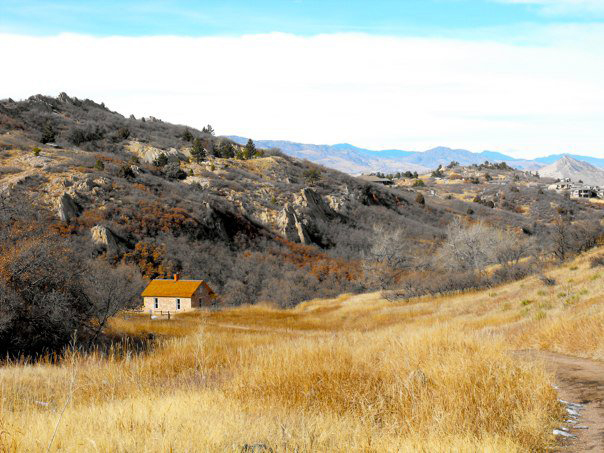Story
'Mongst the Persse's Sandstone Dells
Henry S. Persse and Roxborough Park's Preservation
The preservation community rightly praises builders, craftspeople, and architects who marshaled capital and creativity to construct the landmarks that define our neighborhoods. Buildings or structures that are associated with significant people and are distinguished by "the work of a master" are often rewarded with eligibility for the National Register of Historic Places. Less often do we cheer the people who didn't build; the stewards who, through accident or intent, fashioned a balance between built and natural beauty.
Henry S. Persse (pronounced like "purse"), would-be developer of Roxborough Park, was such a steward. His modest stone house, restored and interpreted with assistance from the State Historical Fund, connects its visitors to the story of his life, his love for the land, and his partially unrealized vision for its future.
Persse, a native of New York, visited Colorado in 1882 after reading an article describing its mountains and mineral wealth. In 1889 he acquired land south of Denver in an area then known as Washington Park. Named for a distinctive rock that resembled the first U.S. president's profile, the land included spectacular red sandstone formations nestled among prairie grasslands, scrub oak meadows, and evergreen forests. Sometime later Persse renamed the land Roxborough Park after his family's estate in County Galway, Ireland. In 1902 he and two other men formed the Roxborough Land Company to develop the property into a premier tourist destination.
In 1907, the Denver Republican reported Persse's plans to build a "splendid resort" with "a first class 200 room hotel, golf links, a club house, a well stocked lake, charming driveways, and comfortable cottages all placed in surroundings said to be the most beautiful." Visitors would travel there from Englewood via a state-of-the-art electric train.
Although Persse never built the hotel or golf course, the simple amenities that he did construct attracted Denver's high society and put Roxborough Park on par with other Front Range getaways. He erected a two-story stone house set into a hillside, various farm and ranch structures, and several guest cottages near the famous presidential profile. Guests met their proprietor in the stone house's second-floor parlor and took their meals in the kitchen below. And though plans for the electric train short-circuited, visitors could hop aboard the Denver, South Park & Pacific Railroad for the short jaunt from Denver's Union Station to Kassler, near Roxborough.
Excerpted entries from Persse's guest book show how early twentieth-century visitors appreciated Roxborough Park's beauty and understood the need to find a balance between economic development and the preservation of natural resources. Edmund J. Churchill of Denver wrote, "A Park made by Nature's hand alone-The Arts of Man could only mar it." Denver Mayor Robert W. Speer opined that the park "should be owned by the city for the free use of the people."
Persse died on Monday, August 26, 1918, when a tramway car struck him as he crossed the intersection of Milwaukee and Twelfth Avenue in Denver. And though his plans to build a hotel in Roxborough Park died with him, his desire to share the area's beauty with family, friends, and the general public were realized. In 1975 the Colorado State Division of Parks purchased five hundred acres of the Persse family property, forming Roxborough State Park. Since then, the park has expanded to 3,319 acres. Containing an unusual combination of diverse ecosystems, historically significant structures, and archaeological resources, the park enjoys National Natural Landmark and National Cultural District designations. Persse's stone house is located within the Roxborough Park Archaeological District.
The State Historical Fund awarded Roxborough State Park four grants totaling over $134,000 between 1994 and 1999 to restore the stone house, interpret its history through a training program and handbook, and to conduct a cultural resource inventory of newly acquired park property. Today, visitors drawn to the park by rocky vistas and wildlife have an opportunity-while strolling a footpath leading from the visitor's center to the stone house-to learn about early nineteenth century tourism, ranching, and about Persse's dream and legacy.
Roxborough State Park is open every day of the year. To reach the Persse Place, hike 1.1 miles north from the Visitor Center on the Fountain Valley Trail. You can contact Roxborough State Park at 303-973-3959 or check the web site for details on Persse Place open house events. A Colorado State Park pass is required on all vehicles entering the park.

